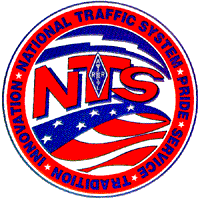
How to Write Formal Traffic ...
Writing Formal traffic is easy. Follow the steps listed below and
you'll be sending and receiving traffic in no time at all:
NR 21 HXG R
KT4ST 15 BLOOMINGDALE GA MAY 20
JOHN JONES
123 MAIN STREET
ANYWHERE GEORGIA 31412
FONE 111 222 3333
NICE TO HEAR YOU ON THE
NET X HOPE TO WORK YOU AGAIN SOON 73
ARNIE / KT4ST
The first
part of a message is called the Preamble, which contains the message
number, handling instructions, message status, originating station call sign,
word count, city and state of origin, and message date.
MESSAGE NUMBER
... This number identifies the message as originating from the station
identified after the handling instructions. Most hams start January first with
number 1 and add sequentially through December 31. The number 21 indicates that
this is KT4ST's 21st originated message this year.
HANDLING INSTRUCTIONS
... Some messages contain handling instructions. These instructions tell the
station receiving the message how to handle it. The HXG instruction tells the
receiving station: Delivery by mail or landline toll call not required. If
toll or other expense involved, cancel message and service originating station.
Handling instructions are optional and most stations do not use them.
MESSAGE STATUS ... This identifies the type of message being sent. All
traffic sent during Non-emergencies should be sent as Routine . The
other status types are W-Welfare, P-Priority, and EMERGENCY.
ORIGINATING
STATION ... This is the Call Sign of the station originating the traffic. If you
write a message to send to someone else, YOU are the originating station.
WORD COUNT ... The word count is the number of words in the TEXT
portion of the message. When writing a message do not use a period,
separate thoughts with an X. Count the X as a word. In the above message, there
are fourteen words and one X, for a total word count of 15.
CITY and
STATE of ORIGIN ... The City and State of origin is the location where the
message originated. If you live in Main City, GA and you go to Central City, GA
and originate a message, The Origin will be Central City GA. There is no comma
placed between the city and the state.
MESSAGE DATE ... The Message Date
is the date that the message was originated. It is written as Month (three
letters) then day.
The next part of the message is the
ADDRESSEE. The Adressee is the intended receipient of the message.
Always include a full address and phone number, if possible.
TEXT
comes next. This is the information part of the message. Try to keep the
Text part of a message to 25 words or less.
The last part of the message
is the SIGNATURE. The Signature tells the receipient who the message is
from. This could be the same as the Originating Station, but it doesn't
have to be. If your friend wants to send a message to his wife, then he is the
signature on the message. Try to keep the Signature part of a message to three
lines or less.
The message is now ready for relay to a receiving station
for either further relay or delivery. When sending a message, remember to
Always separate the parts as follows:
Send the preamble then
pause for a second or two, then send the Addressee. Do not send a Break (BT)
between the Preamble and the Addressee.
Send the prosign (AA) after each
line of the addressee, then send a Break (BT) before starting to send TEXT.
Send the TEXT, then send a Break (BT) before the Signature. Send the
Signature, (AA) after each line if needed. Then send the prosign (AR) This means
you have completed the message. Finally, send either an "N" or a "B". The "N"
means there are NO more messages to follow. The "B" means there are still other
messages to be sent. An optional number may be sent after the "B" to indicate
how many more messages are left.
After you have sent the message, the
receiving station may ask for fills. Fills are bits of information that
the receiving station may have missed while you were transmitting, due to static
or other types of interference. The following is a list of some of the standard
fills.
WA ... Word After __________
WB ... Word Before _________
BN ... Between _______ and ________
AB ... All Before _________
AA ... All After _________
CFM .. Confirm __________
EXAMPLE:
I have sent you the above message, and at the end you send:
WB SOON (BK). My answer will be WB SOON AGAIN (BK) meaning the word before Soon
is Again. If you want to confirm that something you copied is correct, send CFM,
then the word or words to confirm. (example CFM 123 Main Street).
Once
all fills have been taken care of, the receiving station should send QSL NR(the
message number) which means they have received the message and are now ready to
relay or deliver it.
For further information on the National Traffic
System (NTS), consult the Public Service Communications Manual which is
available through the ARRL, either on the web or through written correspondance.



